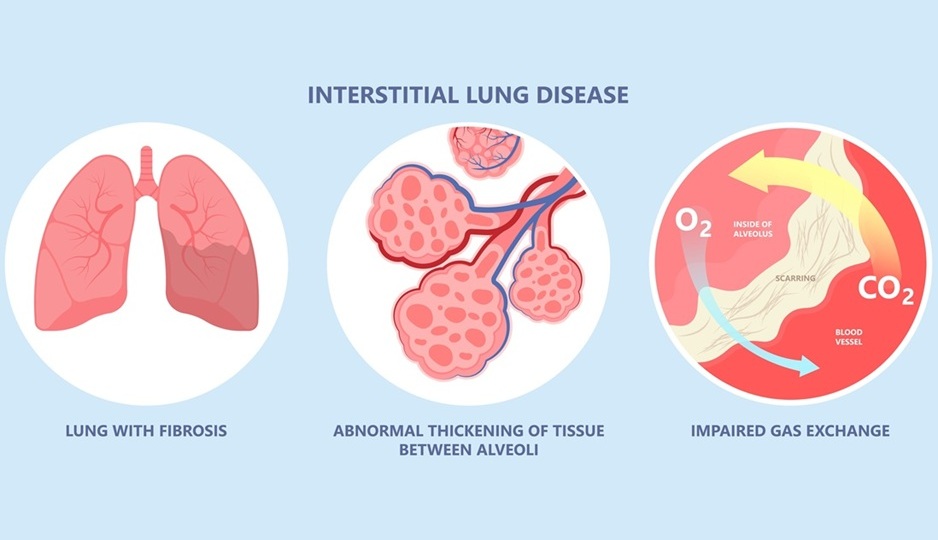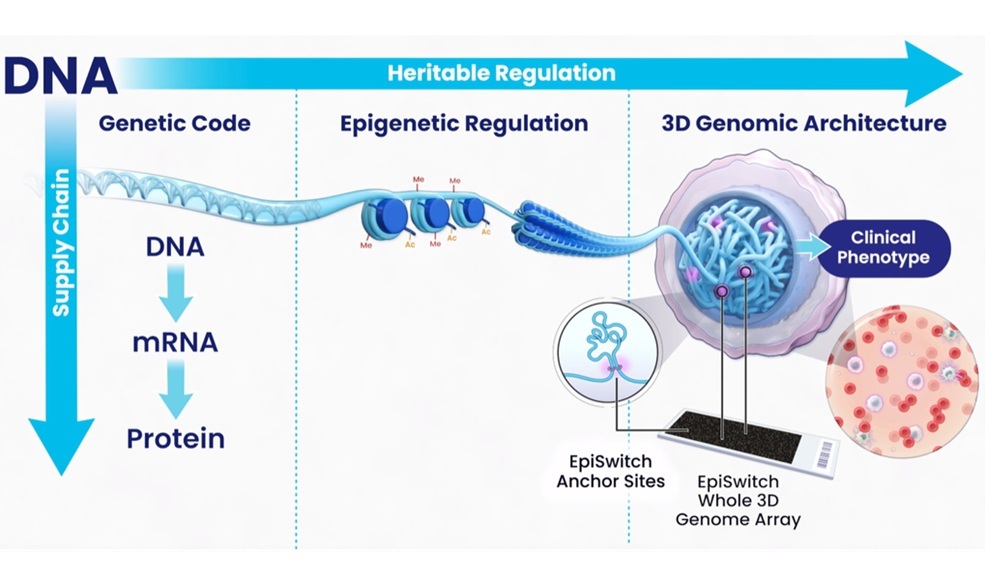Novel Insights on COVID-19 Vaccines and Virus Evolution, AI in the Clinic, and Miniaturization of Diagnostic Platforms Explored at AACC 2021
|
By LabMedica International staff writers Posted on 29 Sep 2021 |

At the 2021 AACC Annual Scientific Meeting & Clinical Lab Expo, laboratory medicine experts presented the cutting-edge research and technology that is revolutionizing clinical testing and patient care.
From September 26-30 in Atlanta, Georgia, the meeting's 200-plus sessions delivered insights on a broad range of timely healthcare topics. Highlights of these included discussions exploring COVID-19 vaccines and virus evolution, research lessons learned from the pandemic, artificial intelligence (AI) in the clinic, clinical translation of engineered microsystems, and improvements to treatments for cystic fibrosis. Additionally, at the Clinical Lab Expo, more than 400 exhibitors displayed innovative technologies that are just coming to market in every clinical lab discipline.
COVID-19 Vaccines and Virus Evolution. SARS-CoV-2 is an RNA virus that easily mutates, and mutants that are not suppressed by the immune responses generated from prior infection or vaccination can then become dominant strains. In this plenary session, Dr. Margaret Liu, CEO of PAX Therapeutics and Chairman of the Board of the International Society for Vaccines, shed light on whether the vaccines to fight this virus need to be able to neutralize newly arising strains, or if SARS-CoV-2 vaccines need to be remade annually like the flu vaccine to try to correspond to the current clinical circulating strains.
COVID-19 Research: Lessons Learned. The COVID-19 pandemic led to enormous scientific progress in a short time, and the development of the vaccines and the understanding of the virus happened at unprecedented rates and with great success. However, the effects of the pandemic have been dramatic on the scientific workforce, on the speed with which publishing has occurred, and on the ability to build public trust in science. In this plenary session, Holden Thorp, PhD, Editor-in-Chief, Science Family of Journals, addressed the need for the scientific community to come together to face the enormous challenges posed by the need for greater trust in science in the public in the U.S. and beyond.
AI in the Clinic. In the meeting's opening keynote, Dr. Regina Barzilay, School of Engineering Distinguished Professor for AI and Health at the Massachusetts Institute of Technology, explored the fact that, by nature, many traditional clinical tasks such as risk assessment, prediction of treatment efficacy, and forecasting patient trajectory can be thought of as prediction problems. Given sufficient amounts of patient data with outcomes, a machine learning model can make predictions which often exceed human experts in accuracy. However, to make these tools more applicable in the clinical setting, there is a need to augment AI models with the ability to explain their decisions to humans, and assess their uncertainty.
Changing Lives of Patients with Cystic Fibrosis. Over the past 30 years, there has been a remarkable expansion in understanding of the genetic basis, molecular biology, and pathophysiology of cystic fibrosis resulting from loss of cystic fibrosis transmembrane regulator (CFTR) protein function. The most extraordinary accomplishment has been the international effort of patients, families, clinicians, scientists, and non-profit foundations to translate this scientific knowledge into approved therapies, known as CFTR modulators, that are transforming the lives of individuals with cystic fibrosis. This plenary session included two perspectives: that of Bonnie Ramsey, MD, Endowed Chair in Cystic Fibrosis Research at the University of Washington School of Medicine, who participated in the clinical development of this class of drugs, and that of Caley Mauch, a person living with cystic fibrosis, who described the impact of this therapy on daily life.
Miniaturization of Diagnostic Platforms. In this, the meeting's closing keynote, Dr. Wilbur A. Lam, W. Paul Bowers Research Chair and Chief Innovation Officer, Pediatric Technology Center at Emory University/Georgia Institute of Technology, discussed microsystems-based COVID-19 diagnostics and his own lab's recent advances in miniaturization of diagnostic platforms, with a focus on hematology and hemostasis/thrombosis.
"If the pandemic has shown us anything, it is laboratory medicine's capacity to adapt to changing healthcare circumstances and use the field's scientific insights to improve quality of life. This capacity is constantly growing, with cutting-edge diagnostic technologies emerging every day in areas as diverse as SARS-CoV-2, artificial intelligence, cystic fibrosis, and miniaturization," said AACC CEO Mark J. Golden.
Latest Technology News
- AI Algorithm Assesses Progressive Decline in Kidney Function
- Taste-Based Influenza Test Could Replace Nasal Swabs with Chewing Gum
- 3D Micro-Printed Sensors to Advance On-Chip Biosensing for Early Disease Detection
- Hybrid Pipette Combines Manual Control with Fast Electronic Aliquoting
- Coral-Inspired Capsule Samples Hidden Bacteria from Small Intestine
- Rapid Diagnostic Technology Utilizes Breath Samples to Detect Lower Respiratory Tract Infections
- Graphene-Based Sensor Uses Breath Sample to Identify Diabetes and Prediabetes in Minutes
- Wireless Sweat Patch Could Be Used as Diagnostic Test for Cystic Fibrosis
- New Method Advances AI Reliability with Applications in Medical Diagnostics
- Self-Powered Microneedle Patch Collects Biomarker Samples Without Drawing Blood
Channels
Clinical Chemistry
view channel
VOCs Show Promise for Early Multi-Cancer Detection
Early cancer detection is critical to improving survival rates, but most current screening methods focus on individual cancer types and often involve invasive procedures. This makes it difficult to identify... Read more
Portable Raman Spectroscopy Offers Cost-Effective Kidney Disease Diagnosis at POC
Kidney disease is typically diagnosed through blood or urine tests, often when patients present with symptoms such as blood in urine, shortness of breath, or weight loss. While these tests are common,... Read moreMolecular Diagnostics
view channel
Interstitial Lung Disease Test Could Identify Patients Before Symptoms Appear
Interstitial lung disease (ILD) is a group of chronic respiratory disorders that cause inflammation and scarring of lung tissue, often leading to irreversible damage and the need for lung transplants.... Read more
Genomic-First Approach Identifies Rare Genetic Disorders Earlier
Rare genetic disorders (RGDs) affect more than 24 million people in the US, yet many cases remain undiagnosed due to the limitations of traditional testing methods. Current diagnosis typically follows... Read moreHematology
view channel
Viscoelastic Testing Could Improve Treatment of Maternal Hemorrhage
Postpartum hemorrhage, severe bleeding after childbirth, remains one of the leading causes of maternal mortality worldwide, yet many of these deaths are preventable. Standard care can be hindered by delays... Read more
Pioneering Model Measures Radiation Exposure in Blood for Precise Cancer Treatments
Scientists have long focused on protecting organs near tumors during radiotherapy, but blood — a vital, circulating tissue — has largely been excluded from dose calculations. Each blood cell passing through... Read more
Platelets Could Improve Early and Minimally Invasive Detection of Cancer
Platelets are widely recognized for their role in blood clotting and scab formation, but they also play a crucial role in immune defense by detecting pathogens and recruiting immune cells.... Read more
Portable and Disposable Device Obtains Platelet-Rich Plasma Without Complex Equipment
Platelet-rich plasma (PRP) plays a crucial role in regenerative medicine due to its ability to accelerate healing and repair tissue. However, obtaining PRP traditionally requires expensive centrifugation... Read moreImmunology
view channel
Blood Test Tracks Treatment Resistance in High-Grade Serous Ovarian Cancer
High-grade serous ovarian cancer (HGSOC) is often diagnosed at an advanced stage because it spreads microscopically throughout the abdomen, and although initial surgery and chemotherapy can work, most... Read more
Luminescent Probe Measures Immune Cell Activity in Real Time
The human immune system plays a vital role in defending against disease, but its activity must be precisely monitored to ensure effective treatment in cancer therapy, autoimmune disorders, and organ transplants.... Read more
Blood-Based Immune Cell Signatures Could Guide Treatment Decisions for Critically Ill Patients
When a patient enters the emergency department in critical condition, clinicians must rapidly decide whether the patient has an infection, whether it is bacterial or viral, and whether immediate treatment... Read moreMicrobiology
view channel
Fast Noninvasive Bedside Test Uses Sugar Fingerprint to Detect Fungal Infections
Candida bloodstream infections are a growing global health threat, causing an estimated 6 million cases and 3.8 million deaths annually. Hospitals are particularly vulnerable, as weakened patients after... Read more
Rapid Sepsis Diagnostic Device to Enable Personalized Critical Care for ICU Patients
Sepsis is a life-threatening condition that occurs when the body’s response to infection spirals out of control, damaging organs and leading to critical illness. Patients often arrive at intensive care... Read morePathology
view channelNew Imaging Tech to Improve Diagnosis and Treatment of Skin Cancers
Skin cancer is the most common malignancy worldwide, and accurately assessing tumor invasion or treatment response remains a major clinical challenge. Current imaging methods, such as confocal microscopy... Read more
Serially Testing Brain Tumor Samples Reveals Treatment Response in Glioblastoma Patients
Glioblastoma (GBM) is the most aggressive form of brain cancer, known for rapid growth, recurrence, and resistance to treatment. Understanding how tumors respond to therapy remains challenging since imaging... Read more
High-Accuracy Tumor Detection Method Offers Real-Time Surgical Guidance
Pancreatic neuroendocrine neoplasms (PNENs) are rare cancers that affect hormone-producing cells in the pancreas. Although uncommon, their incidence has been increasing, and surgery remains the only curative option.... Read moreTechnology
view channel
AI Algorithm Assesses Progressive Decline in Kidney Function
Chronic kidney disease (CKD) affects more than 700 million people worldwide and remains a major global health challenge. The condition often progresses silently, and many patients remain undiagnosed until... Read more
Taste-Based Influenza Test Could Replace Nasal Swabs with Chewing Gum
Influenza is one of the most dangerous infectious diseases worldwide, claiming around half a million lives each year. What makes it particularly insidious is that flu viruses are contagious even before... Read more
3D Micro-Printed Sensors to Advance On-Chip Biosensing for Early Disease Detection
Early-stage disease diagnosis depends on the ability to detect biomarkers with exceptional sensitivity and precision. However, traditional biosensing technologies struggle with achieving this at the micro-scale,... Read moreIndustry
view channel
Terumo BCT and Hemex Health Collaborate to Improve Access to Testing for Hemoglobin Disorders
Millions of people worldwide living with sickle cell disease and other hemoglobin disorders experience delayed diagnosis and limited access to effective care, particularly in regions where testing is scarce.... Read more
Revvity and Sanofi Collaborate on Program to Revolutionize Early Detection of Type 1 Diabetes
Type 1 diabetes (T1D) is a lifelong autoimmune condition in which the immune system destroys the pancreas’s insulin-producing beta cells, leading to dependence on insulin therapy. Early detection is critical... Read more








 (3) (1).png)









